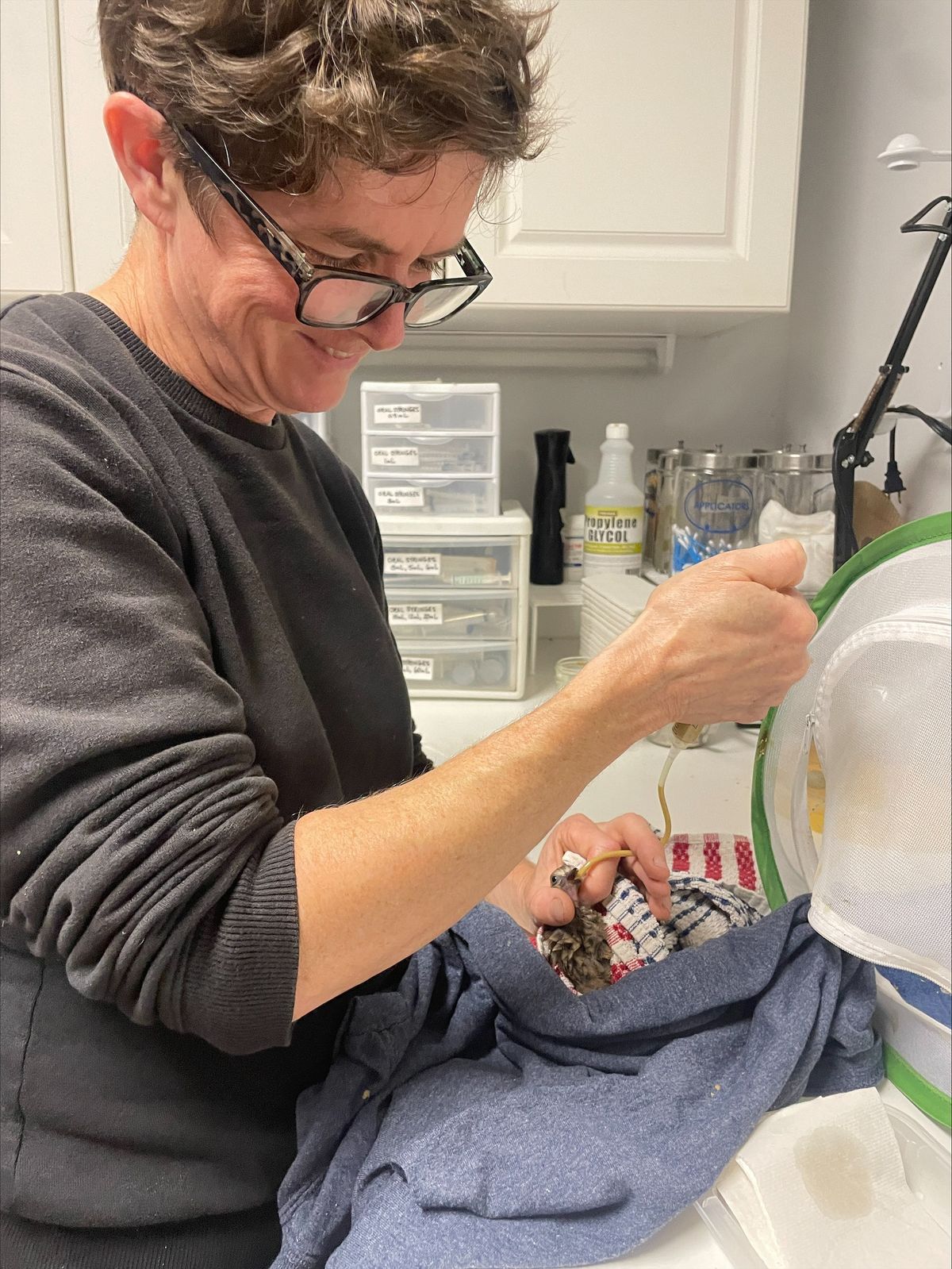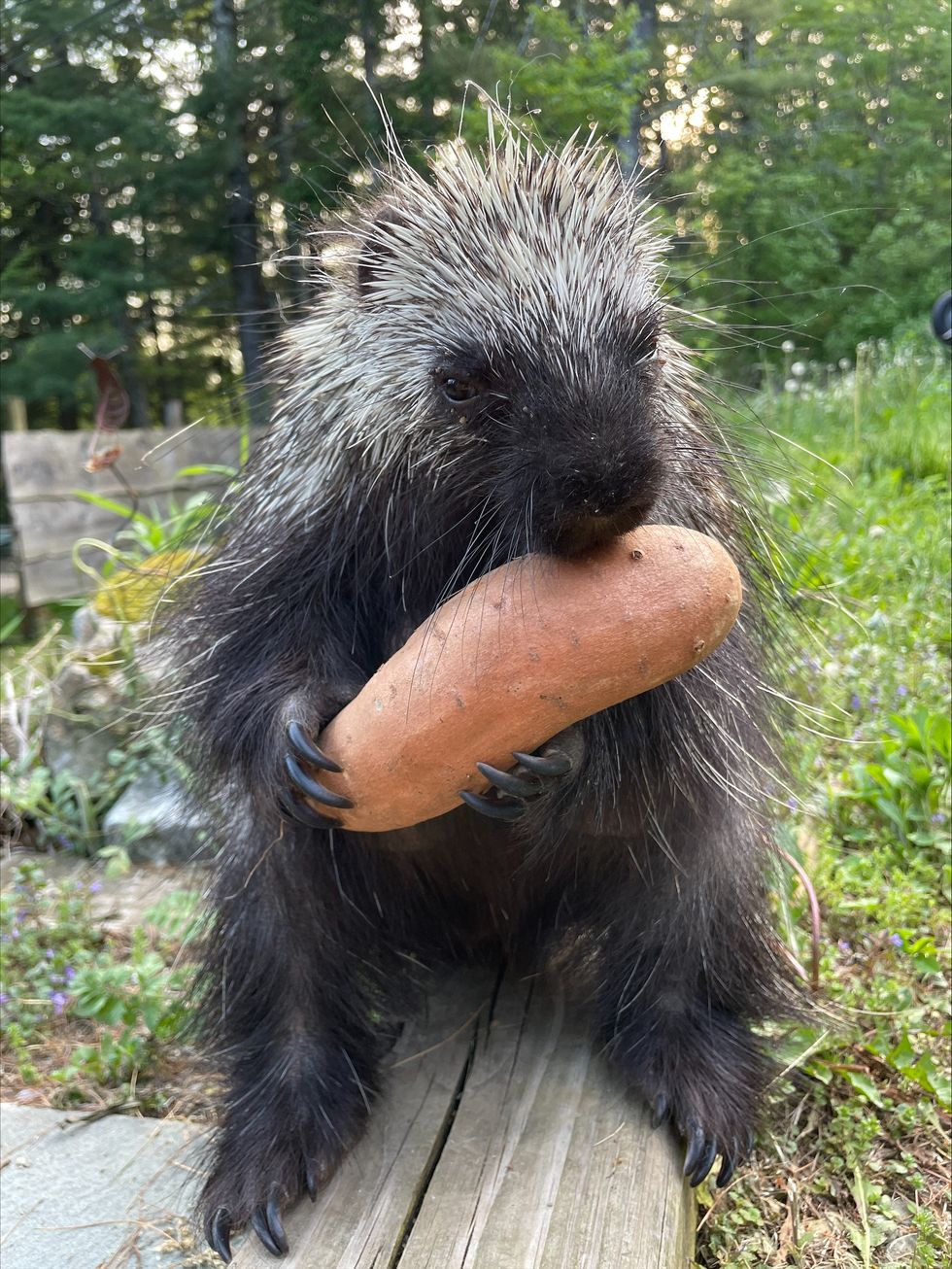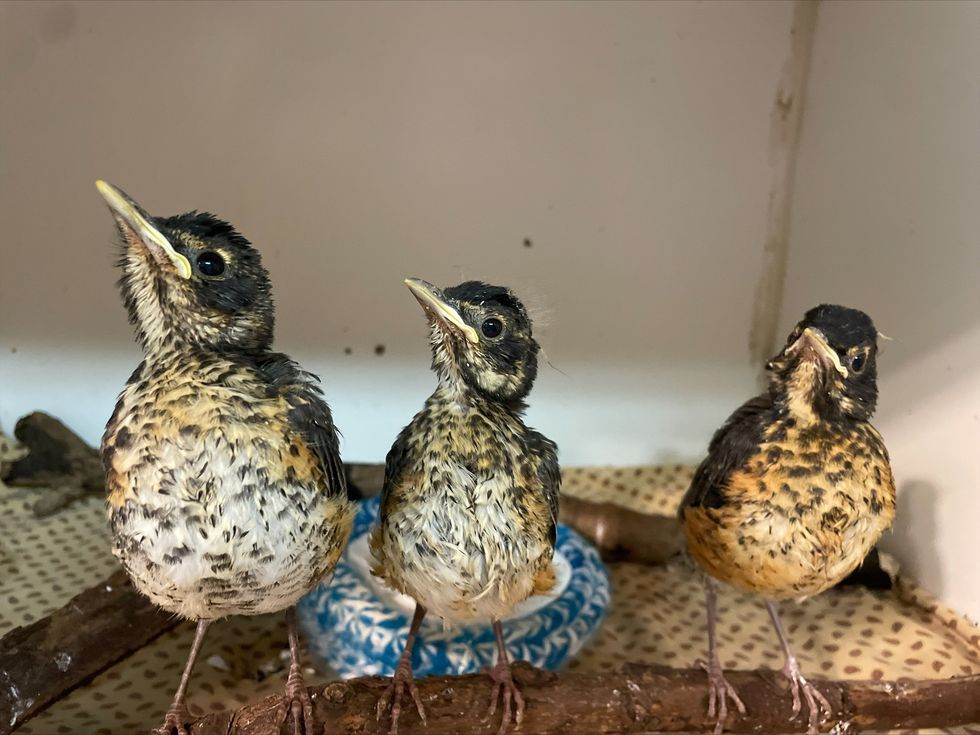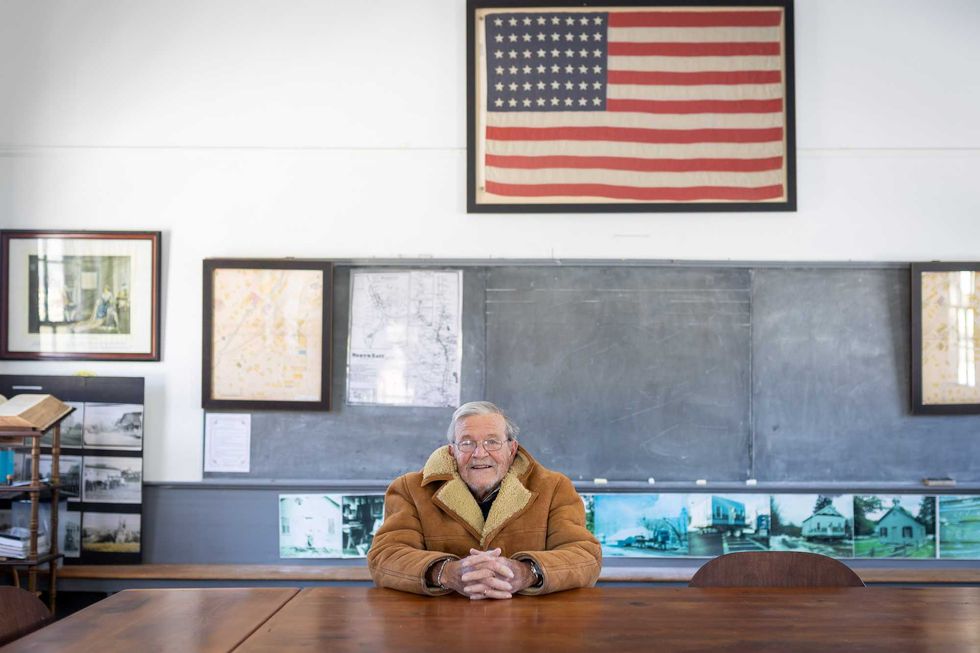Audubon’s efforts give injured animals new hope

Wildlife Rehab Volunteer Zoe Sheehan tube feeds a nestling Mourning Dove.
Provided

Wildlife Rehab Volunteer Zoe Sheehan tube feeds a nestling Mourning Dove.
SHARON — The Sharon Audubon Center located just off of Cornwall Bridge Road is made up of 1,149 acres of mostly woodland habitat and has helped countless animals return to the wild.
The refuge acts as a temporary home for injured and orphaned songbirds, birds of prey, small mammals and reptiles. Nationally it serves as one of two Audubon centers with an animal rehab clinic and, as stated by Director of Wildlife Rehabilitation Sunny Kellner, “is always busy this time of year.”
Kellner, who has been in the role since June 2015, grew up in the area and started working as a volunteer at age 13. It was at the Sharon Audubon that she discovered that helping animals could be both her career and lifestyle.
When asked about the rehabilitation process, she emphasized that every situation is unique and that there is “no one size fits all” for patient care. The process often starts with a report that an animal has been found either injured or orphaned and images are then taken of the animal to determine age, condition, and species.
Once brought in and a full examination is complete, patients are stabilized and treated for any life-threatening issues while also being slowly re-hydrated and fed. It is at this point that staff members and veterinarians will treat all other issues and administer any antibiotics. Continued care is provided up until the patient shows signs of self-reliance for two weeks (self-feed, weatherproofed feathers, ability to move freely).

The most common injuries seen in the clinic are derived from human impact, while toxicities and pathologies follow as other contributors. Examples of human impact injuries include motor vehicle/window strikes, attacks by house pets, and entrapment.
In the past few years, woodpeckers and nuthatches have been disproportionately affected by the sticky tape being wrapped around tree trunks. Put up in an effort to repel spongy moths, trunk space is now taken up by this plastic that is simultaneously trapping and killing bark-climbing birds.
The overarching goal of the clinic is to return the patients back to their natural environments as quickly as possible, but more importantly, in a viable state. For some patients this may mean being in the clinic for a few days while others need to stay closer to a year. Of the small mammals that the Sharon Audubon does take in, porcupines are at the forefront.
Kellner, who specializes in porcupine rehab, explained that the babies typically stay over winter and are released in the spring. The release rate for all species falls between 40-43%.
Animals that are “non-releasable” due to human imprinting or permanent injury typically become residents. Current resident animals include the reptiles on display in the Education Center and the raptors in the outdoor aviaries.

Though the clinic is animal-centered, it is human-dominated. The amount of help and the speed at which animals receive it, is dependent on the number of people ready to jump in. The summer months, commonly referred to as “baby season”, are especially busy. Volunteers and staff work around the clock feeding and caring for baby birds of all species, but specifically Chimney Swifts.
“They need to be fed about every 20 minutes for at least 14 hours,” stated Kellner.
Volunteers learn just about everything - how to feed, handle, identify, and care for patients. They are welcomed year-round with no prior experience required, just the desire to help.
The sprawling property is home to 11 miles of trails, two ponds, raptor aviaries, the Pollinator Garden and a working sugarhouse. In addition to animal rehabilitation, it functions as a community nature center where people of all ages have the opportunity to engage and educate themselves on local wildlife.
The Sharon Audubon has plans to extend their premises in the coming years, providing a larger space for wildlife rehab. Though still in the works, the goal is to have waiting, triage, and isolation rooms, as well as more aviaries and storage areas. It is anticipated that this building will be separate from the public areas, allowing more privacy for patients. The planning of this project comes at a “great time” as pressing illnesses and more regulations are being brought up.
Ralph Fedele sits at a desk in the historic Irondale Schoolhouse, which he led the effort to relocate to downtown Millerton.
MILLERTON — After serving for 12 years on the North East Town Board, Ralph Fedele says he has only one regret.
“I wish I could be called a ‘local,’” he joked with a warm, booming laugh.
Fedele moved to Millerton from New York City 37 years ago, in 1988, and has since worn many hats — volunteer, historian, advocate, elected official — yet he still doesn’t believe he’s earned that title.
“I’m a transplant,” he said matter of factly. “I’m from the city.”
Before settling in Millerton, Fedele spent 25 years working in merchandising at JCPenney.
His roots, however, trace back to Rhinebeck, where he grew up on a 97-acre farm and enjoyed what he describes as an idyllic childhood.
“It was marvelous,” he said, with a twinkle of nostalgia in his eyes. As a boy, he climbed apple trees, spent hours in the family barn’s hayloft, played with neighbors until sunset, and helped his Sicilian grandmother — his nonna — in the garden. Today, Fedele wears her ring. “Any time I’m a little depressed or I want to remember,” he said, “I can talk to her.”
Growing up with an Italian grandmother sparked a lifelong love of history and culture. That curiosity eventually took Fedele to Italy, where he visited the church in which his grandmother was baptized. “Because I love history so much, I wanted to know where my grandmother was from, so I traveled to her village in Sicily.”
Along the way, he uncovered another piece of family history. His great-grandfather, Giovanni Nicolini, was a noted Italian sculptor whose work still stands outside Palermo’s Teatro Massimo, the largest opera house in Italy. Fedele later made a pilgrimage there and photographed his ancestor’s name on the bronze plaque outside of the theater.

The Irondale Schoolhouse
Years after settling in Millerton full time, Fedele was driving north on Route 22 when he spotted an old, classic building and couldn’t stop thinking about it.
“It was in dire straits,” he recalled. “Right on the road, but beautiful. I remember thinking, ‘Wouldn’t that be a great building to move into the village?’”
That moment would eventually turn into Fedele’s lasting legacy.
He left his post at the North East Historical Society to found Friends of the Irondale Schoolhouse, leading an eight-year effort to “move, restore, and repurpose the building.”
Supervisor Chris Kennan said the project remains inseparable from Fedele’s name. “Every time I pass by the Schoolhouse, I think of Ralph,” Kennan said. “It was his vision and persistence that enabled this dream to become a reality.”
Fedele joked that people may have thought he was crazy during the lengthy restoration. “I was a tyrant,” he said with a laugh. “I really made sure that we were able to get it done.” The effort required coordination with the state, the county, village and town officials, and his newly assembled nonprofit board.
As a self-proclaimed history buff, Fedele didn’t stop at the restoration. He found a list of students in old records and did what any determined historian would do. He opened the telephone book and started making calls.
Eventually, he tracked down one of the schoolhouse’s original students — Mary (Mechare) Leitch — who, at the age of 101, returned to the building after renovations were complete.
“It was a marvelous time,” smiled Fedele. “I was so happy to see her.”
‘Trust is earned’
Today, even though he won’t call himself a local, Fedele is a familiar fixture in town. You can find him each week enjoying conversation and a cup of coffee at Talk of the Town Deli, or getting stopped in town by neighbors and friends for a chat.
“I have gained the trust and confidence of a lot of people,” Fedele said. “It comes a little bit at a time. Trust is earned.”
Not only has Fedele served as a town board member, he has volunteered for Townscape and served as the president of the North East Historical Society. He was also one of the first advocates of preserving history by fixing toppled gravestones at the Spencer’s Corners Burying Ground.
His service was formally recognized at his final Town Board meeting through a resolution commending his three four-year terms as councilman, citing his “good humor, kindness to all and deep concern for the community’s senior citizens and for those living on fixed incomes.”
An emotional Fedele addressed the room with a mantra he often repeats. “When you leave, leave this place a little bit better than you found it,” he said. “That’s what I have always tried to do.”
Neighbors react
During the public comment, several residents stood to thank Fedele.
Claire Goodman, a member of the village Zoning Board of Appeals and Townscape volunteer, said Fedele was among the first to welcome her to Millerton.
“Whether we’re standing out in the cold, scrubbing tombstones at Spencer’s Corners, or ringing the bell at the schoolhouse, you always have such grace and you’re such a gentleman.” She added, “The way you laugh, it opens my heart.”
Kathy Chow, who serves on the Conservation Advisory Council and the Climate Smart Task Force, referred to Fedele as a “pitbull,” adding, “We all have hard things that we do, and we keep pushing at it, but you’re the one who makes me think I can keep going.”
Fedele describes his retirement from the town board as bittersweet. “I’m going to miss this,” he said. “I really am.”
Mad Rose Gallery on Route 44 in the Village of Millerton is decked out with lights and decorations to celebrate the holiday season.
MILLERTON — The Village of Millerton is inviting residents and businesses to enter its annual house decorating contest, with judging now underway through Dec. 28.
Awards will be presented in several categories, including Best Lights, Most Creative, Best Overall and Best Commercial Front.
Entries will be evaluated by a panel of judges using established criteria. Creativity will be judged based on originality, variety of materials used and the use of homemade vs. commercially made decorations. Appearance will consider color coordination, balance and overall attractiveness, while effort will reflect the time and energy put into preparation and presentation.
Judging will be conducted by drive-by observation between 6 p.m. and 11 p.m., and displays must be clearly visible from the street side of the house at night. People and pets may not be included as part of the design.
Winners in each category will receive a gift basket, gift certificates and recognition in The Millerton News. Awards will be distributed on Friday, Jan. 9, 2026.
The contest is open to residents and businesses in the Village of Millerton and the Town of North East. Entry forms can be obtained from Village Hall or at villageofmillerton-ny.gov.